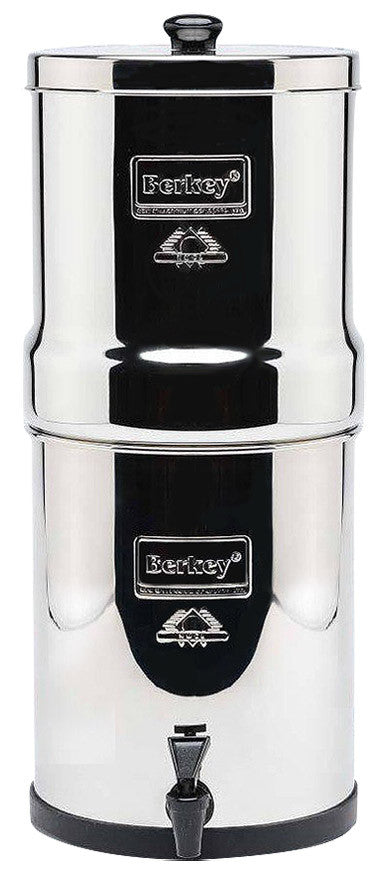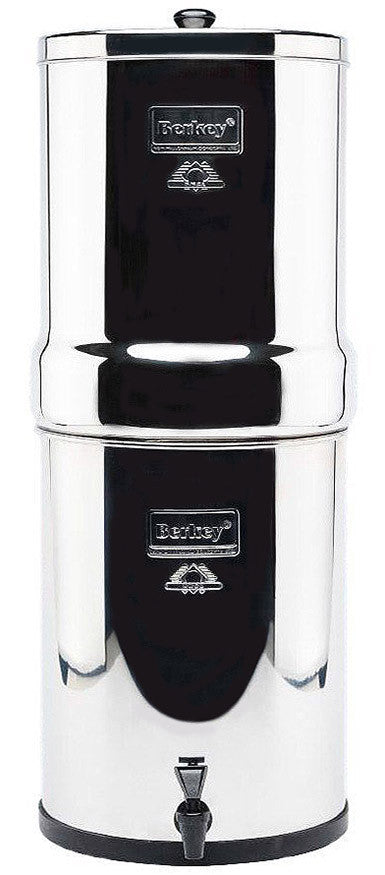
Safe drinking water is a vital aspect of life that we often take for granted. On average, each of us drinks approximately two liters of water daily, making our drinking water susceptible to exposure to various substances.
We take action only when we experience a crisis, such as lead contamination. During this time, we investigated the chemicals in our tap water source.
America is not the only region where problems with tap water exist. It is felt throughout the world.
While there have been cases over the years, every consumer must still be vigilant regarding toxins that may be lurking in the pipes and faucets.
Indeed, water contaminants can lead to adverse health effects, which can be short-term or long-term. Examples of these are reproductive health issues, gastrointestinal illness, respiratory illness, and cancer.
Here are some of the tap water contaminants that you don’t know exist in your water:

Arsenic
According to the Environmental Protection Agency (EPA), around 36 million Americans consumed water containing arsenic at above three parts per billion in 2000.
In the early 2000s, the EPA updated the arsenic standard based on advancements in modern science. As a result, the level of arsenic in the country's water has gradually declined.
Health issues with Arsenic
When you are exposed to arsenic for a long period, it can cause cancer of the lungs, skin, bladder, and kidneys.
Experts also note that it can cause skin issues, such as pigmentation and thickening.
There is an increased risk of bladder and lung cancer for those who ingest arsenic in water at 50 μg/ liter or lower.
Chlorine treatment by-products
Chlorine is an oxidant added to municipal water systems to eliminate microbes. Unfortunately, chlorinated water can have negative health effects. When exposed, the body can absorb it through bathing or drinking.
Meanwhile, chloramines are produced whenever ammonia is added to the water with free chlorine. Typically, these are added as a secondary disinfectant. When combined, chloramine and chlorine form disinfectant byproducts (DBPs).
Health issues with Chlorine treatment by-products
Chlorine in the water is proven to cause reproductive problems. Haloacetic acids plus trihalomethanes are known to cause cancer, especially if it is present in high quantities. It can put the bladder at risk and cause breast and rectal cancer.
Also, chlorine can cause dryness in the skin and hair. It can irritate the eyes and the nose. Chlorine and chloramine cause cell damage, impaired balance, and memory loss.
Fluoride
Fluorides are compounds that combine with fluorine and other substances. Some water facilities add fluoride to their water to help reduce tooth decay, especially in children.
Health Issues with Fluoride
High levels of fluoride are known to cause skeletal fluorosis. This is a painful health condition that causes joint pain and stiffness. Researchers also state that drinking high levels of fluoridated water can cause thyroid gland dysfunctions, hormone disruption, and cancer.
Lead
Lead can be compared to the most popular bad guy in your area. This chemical can cause leaching in the plumbing fixtures and pipes. This is especially true when the flowing water is corrosive.
Studies have shown that lead is a common problem in places with older water systems. However, modern homes with new brass fixtures can still experience lead problems in their water.
Health Issues with Lead
Lead in the water can cause several health issues, including behavioral and neurological problems in children.
Herbicides
Herbicides can accumulate in the water and soil and enter the public water system through rainfall. Rainwater also enters the system through irrigation, which washes away the herbicides from the farmlands into rivers and lakes.
Atrazine is one of the most commonly detected herbicides in the United States' water sources. Studies have shown that it is found in the waters of the Southern and Midwest regions.
The Natural Resources Defense Council (NRDC) urged the government to ban the use of atrazine.
Health issues with herbicides
Atrazine is a popular endocrine disruptor. It can interfere with hormonal activity and lead to reproductive organ failure.
Mercury
Mercury is a liquid metal found in various natural deposits. It can enter the public water system through various means, including the erosion of natural deposits, discharge from factories and refineries, runoff from cropland, and landfill runoff.
Health issues with mercury
High levels of mercury exposure can damage the kidneys. Furthermore, mercury in water can cause brain damage, muscle atrophy, cognitive dysfunction, skin problems, and memory loss.
Nitrates
Nitrates occur naturally in low concentrations in soil and plants. However, due to the use of fertilizers, they have become a contaminant. Runoff from farms and factories seeps into the ground, ultimately ending up in our drinking water.
Health issues with Nitrates
The EPA has set the standard of 10 parts per million for nitrates, which can harm babies and pregnant women.
In rare cases, infants’ excessive exposure to nitrates can cause the 'blue baby syndrome. This fatal disease can prevent oxygen from flowing in the blood.
PCBs
Polychlorinated biphenyls (PCBs) are artificial chemicals used by big industries. They are useful in the production of capacitors, refrigerators, and televisions. During manufacture, PCBs enter the water, air, and soil.
Waste from industries containing PCBs was dumped in landfills and dumpsites. Sometimes, spills and leakages cause the PCBs to enter the water source.
Today, traces of PCBs are found worldwide. Due to their long lifespan, they are toxic and considered a persistent organic pollutant. These findings contributed to their banning in 1979.
Health issues with PCBs
As it enters the water supply, it can be extremely difficult to remove. It acts as a neurotoxin that disrupts hormone production. It interferes with the immune system of the body and can even cause cancer in the long run.
Perchlorate
Perchlorate is found in various industrial products, such as explosives, road flares, and rocket fuels.
Perchlorate has been detected in the water of 26 states in the country. Up until now, there has been no standard for its presence. However, it is being finalized, and we expect the EPA to issue the final version in 2019.
Health Issues with Perchlorate
According to studies, Perchlorate can interfere with thyroid hormone production. It messes with the regulation of metabolism.
Pharmaceuticals
Pharmaceuticals are synthetic products. These are found as prescriptions or for veterinary medicine. Some patients flush out their unused medicines in the toilet or sink. Others were released due to the body's wastes. However, most of the traces of pharmaceuticals in the water are due to improper disposal and poor manufacturing facilities.
Radioactive Contaminants
The radioactive elements found in the drinking water can occur naturally. However, radioactive materials are produced from nuclear weapons, medicines, and energy that can get into drinking water. This can be due to leakage and improper water storage.
Health issues with radioactive contaminants
According to studies, the radioactive contaminants in the water can potentially lead to kidney failure. In the long run, one can also possibly develop cancer.
Vinyl Chloride
Vinyl chloride is a chemical used to make PVC plastic products. Examples of these include the pipes used inside the home. Old pipes can lead to the leakage of vinyl chloride into the water, a problem that affects some communities in the United States. When a high quantity of vinyl chloride is present in the water, it can cause cancer.
Volatile Organic Compounds
Volatile Organic Compounds (VOCs) encompass a range of chemicals emitted as gases. Today, thousands of products have VOCs, so it is no surprise that these elements end up in our drinking water. The body can absorb these contaminants when the water is heated and converted into vapor.
Quality of Tap Water

The quality of tap water differs greatly between cities and countries. First, it depends upon the available water sources for each region.
It also depends on the kinds of artificial and natural infrastructures near water resources.
Tap water quality also depends on the water treatment processes used, and the chemicals involved will determine its end product.
Moreover, the standards set out by the health and government authorities have much to say regarding water quality. Finally, the condition, age, and materials of the water delivery infrastructure determine water quality.
How to Keep the Water Safe
One effective way to prevent health issues caused by contaminants is to ensure that the water meets standards. Protect your water sources, provide effective water treatment, and monitor water quality. Various laws and regulations at the federal and state levels implement these strategies.
In the United States, the EPA regulates the public drinking water supply. The country has one of the most reliable public water systems, which delivers water to millions of consumers. While regulations and infrastructure ensure water quality, many areas have contaminant levels that pose risks to numerous people.
On the other hand, small community water supply consumers have little assurance, as they are not covered by the Safe Drinking Water Act (SDWA). Examples are private domestic wells, which the government does not regulate. Thus, the exposure and hazards of contaminants in drinking water remain essential to public health.
The Berkey Water Filter System

One effective method is to invest in and install a water filter system inside your home to protect the water source. This can produce clean drinking water without contaminants. Various brands are available, but one is the Berkey Water Filter System.
Our company provides Berkey Water Filter Systems, the best gravity water filter element on the market. It can eliminate all toxins without damaging the healthy minerals in the water.
Our product line has surpassed other filtering methods with its ability to remove harmful contaminants. According to the test results done by Envirotek Laboratories Inc. in New Jersey, the Berkey Water can remove up to 99.9% of the following chemicals:
- Bisphenol-A
- Chloramine
- Pharmaceuticals
- Petroleum Contaminants
- Heavy Metals
Berkey Water Filters dramatically reduce trihalomethanes, inorganic minerals, heavy metals, pharmaceuticals, pesticides, VOCs, petroleum products, perfluorinated chemicals, rust, silt, sediment, radiologicals, and more.
Product Line

We have seven various products here at the Berkey Water Filter. All of our products contain the Black Berkey Purification Elements. The state authorities have tested this water purifier.
Here are some of our best-sellers:
- Big Berkey Water Filter-2.25 gallons
- Royal Berkey Water Filter- 3.25 gallons
- Travel Berkey Water Filter-1.5 gallons
- Crown Berkey Water Filter-6 gallons
-
Imperial Berkey Water Filter-4.5 gallons
- Sport Berkey Water Bottle
- Go Berkey Kit
Protect your family from the adverse health effects of contaminants in your water. Produce your own clean and safe drinking water anywhere you go. You can have it at home, at camps, or at work. Moreover, the Berkey Water Filters make a good gift for your loved ones.
Conclusion
In brief, our drinking water is contaminated with various environmental chemicals.
You can protect your family by converting contaminated tap water into clean drinking water. A water purification device, such as the Berkey Water Filter System, can accomplish this. Visit our website and select the products that best meet your family’s needs.
Also Read: Is It Safe To Drink Tap Water In U.S.? Find Out The Facts And Truth About Tap Water
← Older Post Newer Post →





